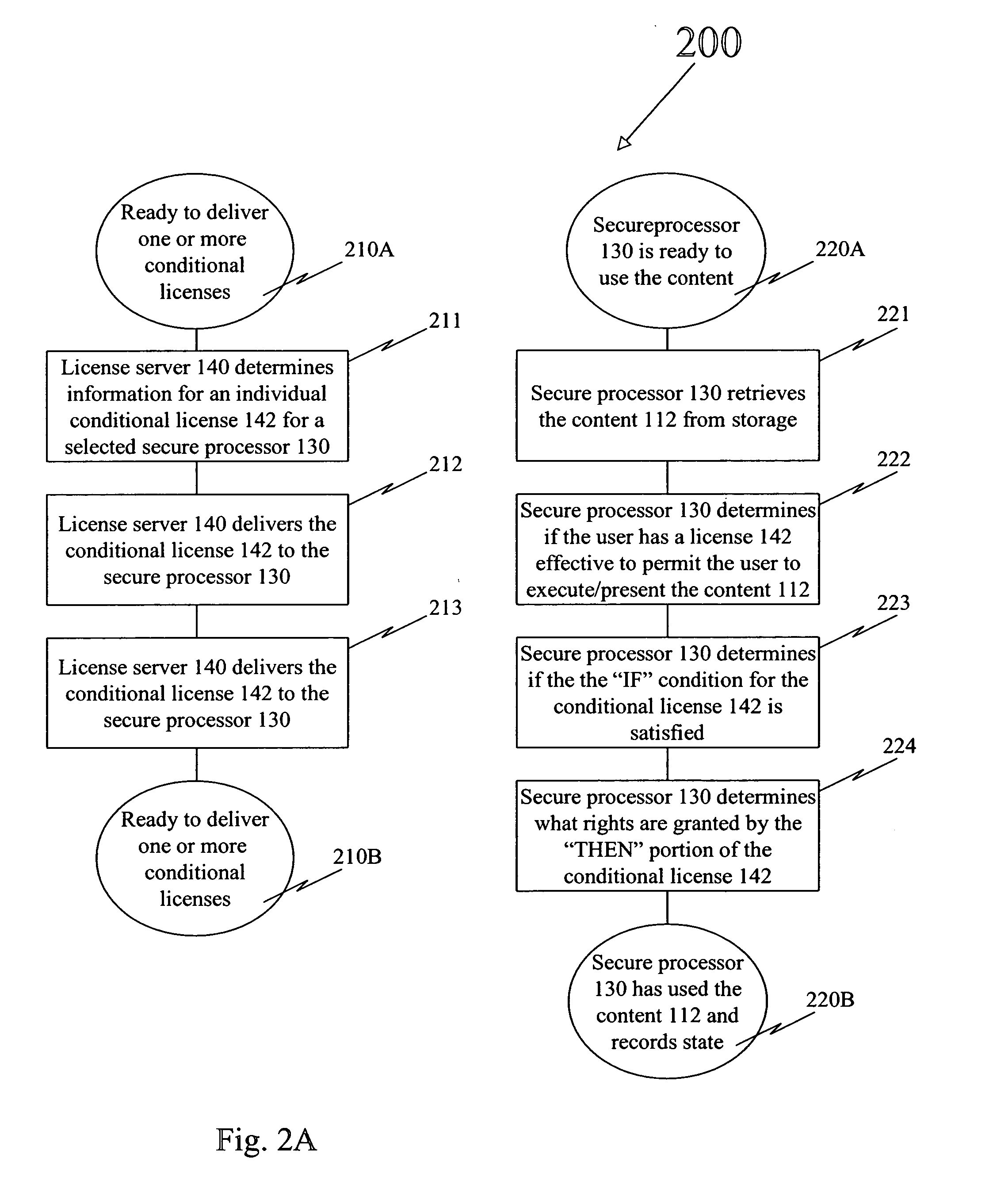Static-or-dynamic and limited-or-unlimited content rights
- Summary
- Abstract
- Description
- Claims
- Application Information
AI Technical Summary
Benefits of technology
Problems solved by technology
Method used
Image
Examples
first embodiment
As described above, in a first embodiment, a dynamic license or a set of dynamic content rights might be represented within a data structure. The data structure might be maintained within the secure playback device 130 or in the external storage 132, with the effect that a secure processor associated with the secure playback device 130 is capable of parsing and enforcing those dynamic content rights.
second embodiment
As described above, in a second embodiment, a dynamic license or a set of dynamic content rights might be represented by allowing an issuer of that dynamic license to read the state of the selected content, and to dynamically alter or issue a license 142 in response to that state. The issuer of the dynamic license would be allowed to obtain the state of the game from the external storage 132, and to dynamically alter or issue a license 142 for an element of content 112.
As described above, in a third embodiment, an element of content 112, under control and supervision of a secure processor associated with the secure playback device 130, can modify the state of the game by writing to the external storage 132. In such embodiments, either in combination with the first embodiment or the second embodiment described above, the element of content 112 can have the effect of providing a dynamic license or a set of dynamic content rights.
For a first example, not intended to be limiting in a...
PUM
 Login to View More
Login to View More Abstract
Description
Claims
Application Information
 Login to View More
Login to View More - R&D
- Intellectual Property
- Life Sciences
- Materials
- Tech Scout
- Unparalleled Data Quality
- Higher Quality Content
- 60% Fewer Hallucinations
Browse by: Latest US Patents, China's latest patents, Technical Efficacy Thesaurus, Application Domain, Technology Topic, Popular Technical Reports.
© 2025 PatSnap. All rights reserved.Legal|Privacy policy|Modern Slavery Act Transparency Statement|Sitemap|About US| Contact US: help@patsnap.com



